Bryansk
| Bryansk (English) Брянск (Russian) |
|
|---|---|
| — Inhabited locality — | |
.svg.png) Location of Bryansk Oblast in Russia |
|
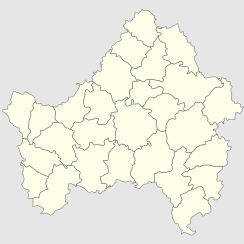 Bryansk
|
|
| Coordinates: | |
.gif) |
|
| Holiday | September 17 |
| Administrative status | |
| Country | Russia |
| Federal subject | Bryansk Oblast |
| Administrative center of | Bryansk Oblast |
| Municipal status | |
| Urban okrug | Bryansk Urban Okrug |
| Head | Igor Alyokhin |
| Statistics | |
| Area | 186 km2 (72 sq mi) |
| Population (2002 Census) | 431,526 inhabitants[1] |
| - Rank | 41 |
| - Density | 2,320 /km2 (6,000 /sq mi)[2] |
| Time zone | MSK/MSD (UTC+3/+4) |
| Founded | 985 |
| Postal code(s) | 241 |
| Dialing code(s) | +7 4832 |
| Official website | |
Bryansk (Russian: Брянск) is a city in Russia, located 379 kilometers (235 mi) south-west from Moscow. It is the administrative center of Bryansk Oblast. Population: 431,526 (2002 Census).[1]
Contents |
History
The first written mention of Bryansk was in 1146, in the Hypatian Codex, as Debryansk (appears variously as Дъбряньск, Дьбряньск, and in other spellings).[3] Its name is derived from "дъбръ", a Slavic word for "ditch", "lowland" or "dense woodland"[4][5]; the area was known for its dense woods, брянские леса, of which very little remains today. Local authorities and archaeologists, however, believe that the town had existed as early as 985 as a fortified settlement on the right bank of the Desna River.
Bryansk remained poorly attested until the Mongol invasion of Russia. It was the northernmost of the Severian cities in the possession of the Chernigov Rurikids. After Mikhail of Chernigov was murdered by the Mongols and his capital was destroyed, his son moved his seat to Bryansk. In 1310, when the Mongols sacked the town again, it belonged to the principality of Smolensk.
Olgierd of Lithuania acquired Bryansk through inheritance in 1356 and gave it to his son, Dmitry the Elder. Until the end of the century, the town was contested between Jogaila, Vytautas, Švitrigaila, and George of Smolensk.
Great Duchy of Moscow conquered Bryansk following the Battle of Vedrosha in 1503. The town was turned into a fortress which played a major role during the Time of Troubles. Peter the Great incorporated Bryansk into the Kiev governorate, but Catherine the Great deemed it wise to transfer the town to the Oryol guberniya in 1779. She also promulgated the town's coat of arms.
In the 17th and 18th centuries, the economy of Bryansk, which had become a regional trading center, was based on the Svenskaya fair, the largest in Western Russia. The fair was held annually under the auspices of the Svensky Monastery. After canon and ammunition started to be manufactured there for the Imperial Russian Navy in 1783, Bryansk evolved from a regional market town into an important industrial center for metallurgy and textiles. The city's population exceeded 30,000 by 1917.
In 1918 the Belarusian People's Republic claimed Bryansk, but the town was taken by Bolshevik forces in 1919. During the World War II, Bryansk was occupied by the Germans (from October 6, 1941 to September 17, 1943) and the city was heavily damaged by fighting. About 60,000 Soviet partisans were active in and around Bryansk, inflicting heavy losses on the German army. Soon after its liberation, Bryansk became the administrative center of Bryansk Oblast (1944).
Modern city

Today Bryansk is an important center for steel and machinery manufacturing, and is home to many large factories. Railway wagons and locomotives are important products. Bryansk also has two universities, three theatres and a technical academy. The city and the region was mildly affected by the Chernobyl accident. The city has a developed Trolley bus network and is a hub of several road and rail connections.

Russian cosmonaut Viktor M. Afanasyev, shot put athlete Svetlana Krivelyova, sculptor and the architect Naum Gabo, and classical pianist Valentina Igoshina were born in Bryansk. Bulgarian communist leader Stanke Dimitrov (Marek) died in an aviation accident near the city.
Partner cities
According to the city's official page, Bryansk is twinned with:
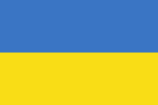 Chernihiv, Ukraine.
Chernihiv, Ukraine.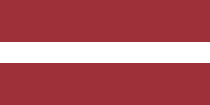 Dobele, Latvia.
Dobele, Latvia. Dupnitsa, Bulgaria.
Dupnitsa, Bulgaria.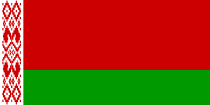 Gomel, Belarus.
Gomel, Belarus. Győr, Hungary.
Győr, Hungary. Konin, Poland.
Konin, Poland. Karlovo, Bulgaria.
Karlovo, Bulgaria.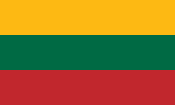 Naujoji Akmenė, Lithuania.
Naujoji Akmenė, Lithuania.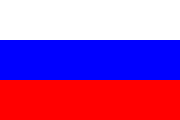 Orel, Russia.
Orel, Russia. Severodvinsk, Russia.
Severodvinsk, Russia.
See also
- Lokot Autonomy
External links
- (Russian) Official website of the city
- (Russian) Bryansk24 - Main website of the city
- (Russian) History of Bryansk on the website of the regional administration
- (Russian) Unecha - towns in Bryansk Oblast
- (English) Google Maps Satellite Image
References
- ↑ 1.0 1.1 Федеральная служба государственной статистики (Federal State Statistics Service) (2004-05-21). "Численность населения России, субъектов Российской Федерации в составе федеральных округов, районов, городских поселений, сельских населённых пунктов – районных центров и сельских населённых пунктов с населением 3 тысячи и более человек (Population of Russia, its federal districts, federal subjects, districts, urban localities, rural localities—administrative centers, and rural localities with population of over 3,000)" (in Russian). Всероссийская перепись населения 2002 года (All-Russia Population Census of 2002). Federal State Statistics Service. http://perepis2002.ru/ct/html/TOM_01_04_1.htm. Retrieved 2009-08-19.
- ↑ The value of density was calculated automatically by dividing the 2002 Census population by the area specified in the infobox. Please note that this value may not be accurate as the area specified in the infobox does not necessarily correspond to the area of the entity proper or is reported for the same year as the Census (2002).
- ↑ Hypatian Codex
- ↑ Черных П. Я.: Историко-этимологический словарь современного русского языка. Москва, Русский язык-Медиа, 2004
- ↑ Смолицкая Г. П.: Топонимический словарь Центральной России. Москва, Армада-пресс, 2002
|
||||||||||||||